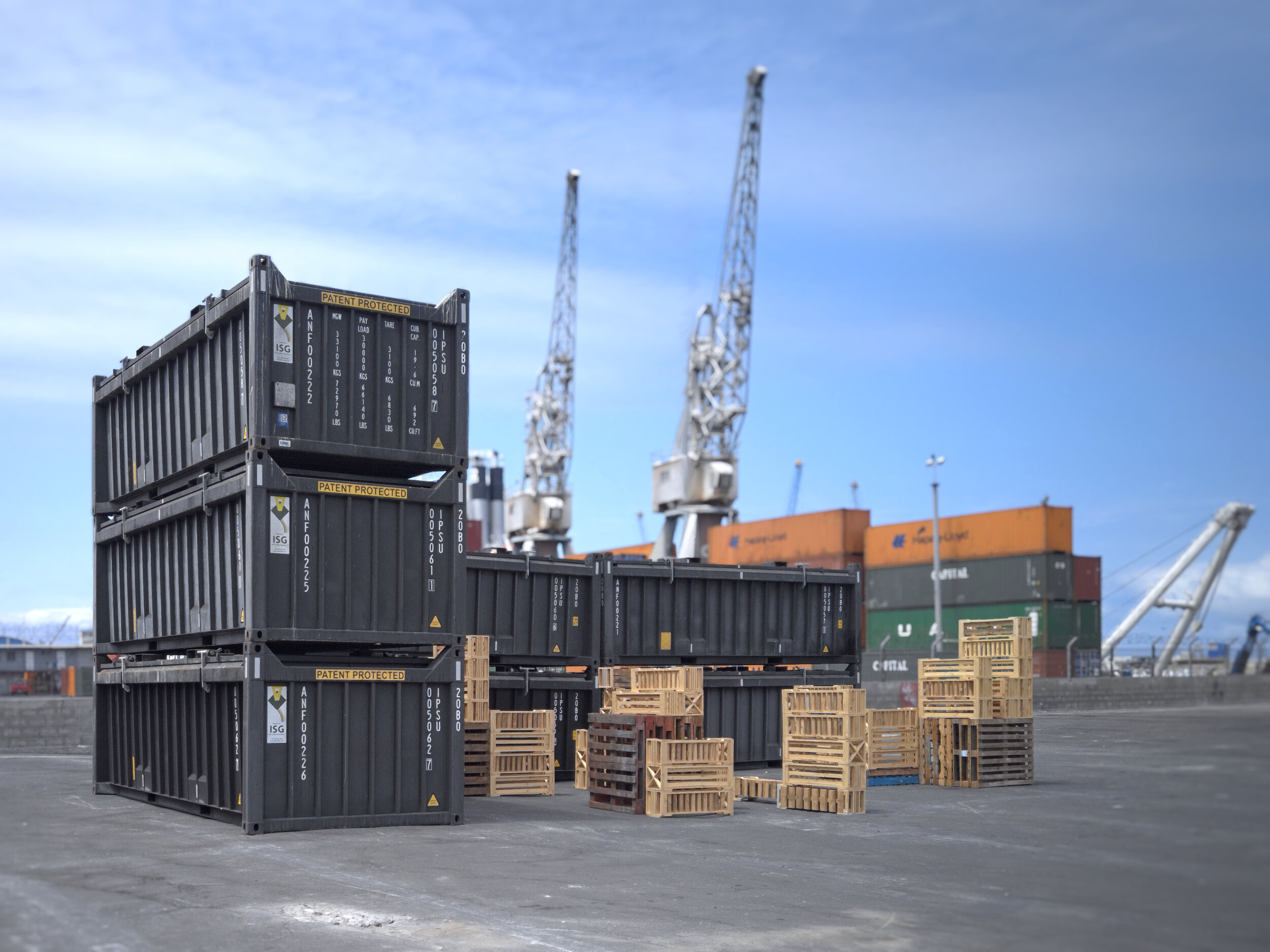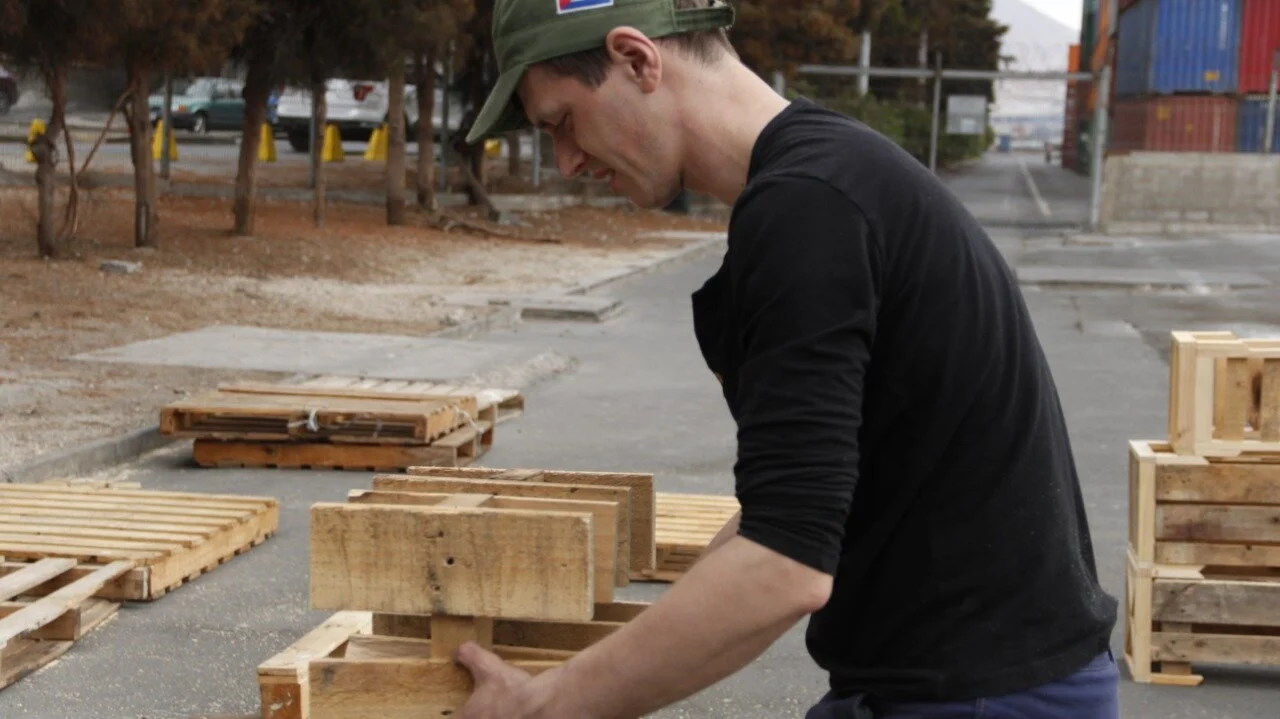Ciudad de Contenedores (2020)
A new container terminal for Antofagasta, Chile. Commisioned by the SACO 9 visual arts festival.
The port of Antofagasta is a city that runs on the back of its mining industry, with copper and lithium being its mainstay. But as I looked at this bustling coastal city, I saw something missing, something that I knew I could provide. That's why I set out to create an art installation that would not only enhance the city's shipping infrastructure but also add a touch of visual magic.
Introducing my sculpture that represents a new container terminal, an installation built specifically for the SACO9 visual arts festival. My proposal emerged as the winner of their international contest and I was commissioned to bring my vision to life.
The installation is made up of intricately arranged wooden containers, each one carefully placed to create a cohesive, visually striking whole. The sculpture was installed at the location of a real container terminal, serving as a representation of progress and absurdism.
The artwork was a temporary installation and was open for public display in December 2020 and January 2021.
Pandemic Production
When I found out my project was selected by SACO after an international open call, I should have been ecstatic. After all, I had just beat out 200 other talented artists for the honor. But instead of feeling triumphant, I felt detached, like I was watching the whole thing unfold from outside my own body. That feeling of detachment, of being an observer in my own success, followed me throughout the entire journey of this project. From winning the open call, to the on-site delivery of the project, everything felt a bit surreal.
The pandemic only added an extra layer of challenge to the whole experience. I'm no stranger to working under tight deadlines and in high-pressure environments, especially in megacities (like Hong Kong, Tehran, Buenos Aires, Shanghai, and London) where material abundance can be had at a price. But, Despite the challenges and unfamiliarity of this project I can say that it was one of the most challenging, yet exciting and fulfilling projects I've ever worked on at that point.
Antofagasta is an island in the middle of a barren desert. Unlike most cities, it's heavily reliant on imports and doesn't benefit from the synergies of neighboring metropolises. In this harsh environment, resource constraints are the norm. Now, toss in a global pandemic, and you've got the recipe for one wild ride of a project.
But hey, I'm a glass-half-full kind of guy. And in this case, that glass was overflowing with opportunity to learn.
This project was a masterclass in adaptation and flexibility. With every twist and turn of the pandemic, the project's parameters shifted. From deadlines to locations to production schedules to available resources, nothing was set in stone. But the constant uncertainty forced me to stay nimble and think on my feet. And all of that added pressure made me a better project manager.
Overall, it was a challenging experience but I enjoyed every bit of it.
As I set out to plan my production, the world was a vastly different place. Borders were closed tight and my journey would not be an easy one. I reached out to the Chilean embassy in Belgium in search of a work permit, but they offered no assistance. Our first plan was to sculpt my installation in a "quarantined environment" in Santiago but just as I was about to depart, the government shifted the rules once again, and I was suddenly not allowed to travel to Chile.
With time slipping away and the ever-changing regulations, I was forced to adapt on the fly. My initial proposal had been to use cheap wood and handle the entire production by myself, but those time constraints were no longer feasible.
Days before my scheduled departure, everything changed once again. I, an improvisational artist, was forced to outsource parts of my work and become the architect of my own project. Through this process, I learned the valuable skill of conceptual thinking and proved that I am capable of adapting to any circumstance.
(c) Iván Pérez, SACO 9
I needed to rethink my art installation, and make it modular. So I went to work in my studio in Belgium, and created a set of blueprints and a step-by-step video for the technicians in Antofagasta, Chile. I instructed them how to efficiently assemble the modules in a limited amount of time, So that when I arrived 2 days before the Grand Opening, I had the perfect building blocks to assemble the exhibition - like building with legos.
But the pandemic had other plans. Suddenly, construction materials were in short supply and my project hit a snag. There wasn't enough wood to finish the exhibition as I had originally envisioned. And to make matters worse, there was a wood shortage.
But I'm not one to let a little obstacle like a pandemic stop me. So, I broke the project down into four phases:
Outsourcing production and setting up those modules by myzelf.
Creating new, unique sculptures using discarded pellets from the port.
Holding an exhibition-building workshop featuring all of the artworks.
Building a new, revamped set-up for the public that included the new, one-of-a-kind pieces.
Despite the challenges, we were able to make it work and the exhibition was a huge success.
(c) Iván Pérez, SACO 9
Deep in my soul, I embrace the structured and orderly nature of a good work system. But when the pandemic hit, my project became a wild ride of unpredictability. Each day brought new challenges and I found myself constantly pivoting on a dime.
But through the supportive and familial structure of the SACO organization, I was able to find new ways to approach my visual work and master the art of crisis management. The stormy waters of the pandemic may have shaken up my project, but I emerged as a more resilient and adaptable artist.





